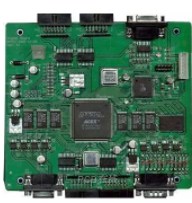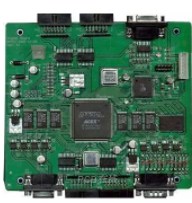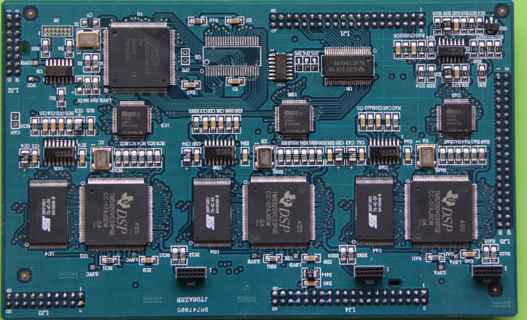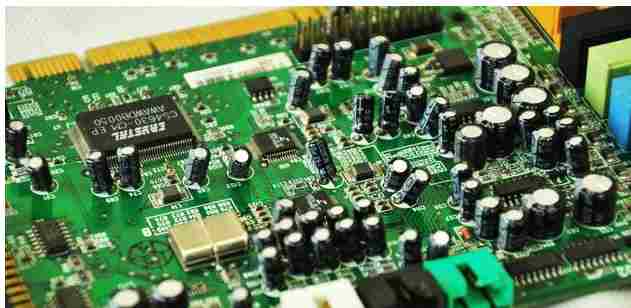
How to design PCB for heat dissipation?
The circuit board (PCB) is a key component. It carries various electronic components and is responsible for transmitting electrical signals and electricity. Since the work of electronic components generates heat, thermal design is essential to ensure the proper operation of the circuit board. This article will detail the principles and techniques of PCB heat dissipation design, aiming to help readers understand how to optimize their PCB design to improve heat dissipation performance and system reliability.
The first part: the basic principle of heat dissipation design
To understand the principle of PCB heat dissipation design, we first need to understand how heat is generated and transferred on the circuit board. In electronic devices, electronic components consume electricity during operation and convert a portion of the electricity into heat. This heat energy is transmitted to the surrounding environment through conductors (such as metal foils) and insulators (such as circuit board substrates). If the heat is not effectively dissipated from the board, it will cause the temperature of the component to increase, which may affect its performance and life.
Part Two: Key elements of thermal design
1. PCB layout design: Good PCB layout design can maximize the heat dissipation performance. First, high-power components should be kept as far away as possible from areas with poor heat dissipation, such as enclosed Spaces or other heat sources. Secondly, the spacing between components should be reasonably planned so that the air flow is smooth. In addition, be careful to avoid too dense wiring, so as not to hinder the conduction and dissipation of heat.
2. Heat conduction: In PCB heat dissipation design, heat conduction is crucial. In order to improve the heat conduction effect, the following measures can be adopted:
• Use metal foil as a cooling material to connect high-power components to heat sinks or metal substrates to improve heat transfer efficiency.
• Optimize PCB substrate materials, select materials with good thermal conductivity, such as aluminum substrate or copper substrate, to improve the conduction effect of heat.
• Use thermal materials such as heat sinks or heat sinks to directly contact the components with the heat sinks to promote heat conduction.
3. Radiator design: Radiator is a commonly used component in PCB heat dissipation design. Heat sink design: Heat sinks are commonly used components in PCB heat dissipation design. Its role is to conduct heat from the circuit board to the surrounding environment. When selecting and designing a radiator, the following factors should be considered: https://www.kingfordpcb.com/yuan.php
https://www.kingfordpcb.com/yuan.php
• Size and shape of the heat sink: The size and shape of the heat sink should be reasonably selected according to the power consumption and heat dissipation requirements of the circuit board. Large heat sinks can provide a larger cooling surface area, increasing the heat dissipation effect.
• Radiator materials: Common radiator materials include aluminum and copper. Aluminum radiators have better heat dissipation performance and lightweight characteristics, while copper radiators have higher thermal conductivity. Select suitable materials according to actual needs.
• Heat sink installation location: The heat sink should be installed near the components that generate a lot of heat on the circuit board to ensure that heat can be quickly transferred to the heat sink. At the same time, the space limitation of the radiator and interference with other components should be taken into account.
4. Air flow and cooling fans: In some high-power circuit board designs, the radiator alone may not be able to meet the heat dissipation requirements. At this time, you can consider using a cooling fan to increase air flow and improve the heat dissipation effect. Cooling fans can help transfer and dissipate heat by generating airflow. When selecting a cooling fan, the appropriate size, air volume and speed should be determined according to the power consumption and heat dissipation requirements.
Part Three: Other heat dissipation design tips
In addition to the above key elements, there are some other thermal design tips that can help optimize the thermal performance of your PCB:
1. Rational use of heat dissipation holes and through holes: By setting heat dissipation holes and through holes on the PCB, air flow can be increased and heat dissipation effect can be improved. The heat dissipation hole can increase the conduction path of heat, and the through hole can help the air flow between the radiator and the radiator.
2. Temperature sensor and thermal management system: The installation of temperature sensors can monitor the temperature changes of the components on the circuit board, so as to take timely heat dissipation measures. In addition, a thermal management system can be used to automate temperature control and heat dissipation regulation. Based on the real-time temperature data, the thermal management system automatically adjusts the fan speed or the working status of other cooling devices to keep the temperature of the circuit board within a safe range.
3. Thermal simulation and simulation: Thermal simulation software can be used to simulate and analyze PCB design and evaluate the effect of different heat dissipation strategies. Through thermal simulation, the temperature distribution of components can be predicted more accurately, the heat dissipation design can be optimized, and the trial and error costs in the actual manufacturing process can be reduced.
4. Management of ambient temperature: In addition to optimizing heat dissipation performance in PCB design, attention should also be paid to the management of ambient temperature. Install the circuit board in a well-ventilated device to avoid a high temperature environment and overheating air directly affecting the heat dissipation effect of the circuit board.
5. Separation of power and signal lines: the power line and signal line are routed separately, which can reduce the interference of the power line to the signal line, reduce the power consumption on the power line, reduce the heat generation, and contribute to the overall heat dissipation effect.
Conclusion:
PCB heat dissipation design is one of the key factors to ensure the normal operation of the circuit board and improve the reliability of the system. Through reasonable PCB layout design, optimization of heat conduction, selection and design of heat sink, application of heat dissipation fan, and application of other heat dissipation design techniques, the heat dissipation performance of PCB can be effectively improved, the component temperature can be reduced, and the stability and reliability of the system can be ensured. When designing PCB heat dissipation, thermal simulation and simulation tools can also be used to predict and optimize, improving the accuracy and efficiency of the design. Through the comprehensive application of these skills and principles, PCB heat dissipation design can be better performed, and the performance and life of electronic equipment can be guaranteed.







